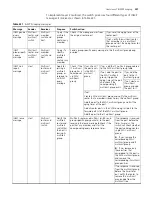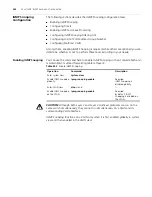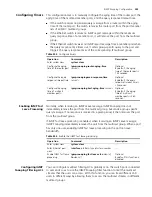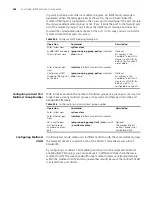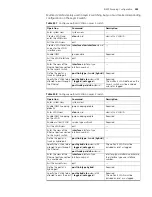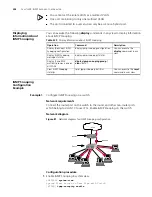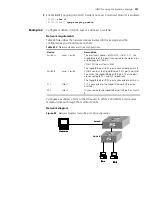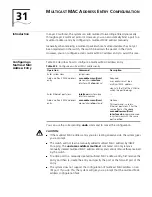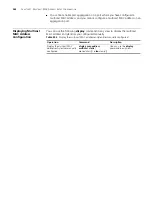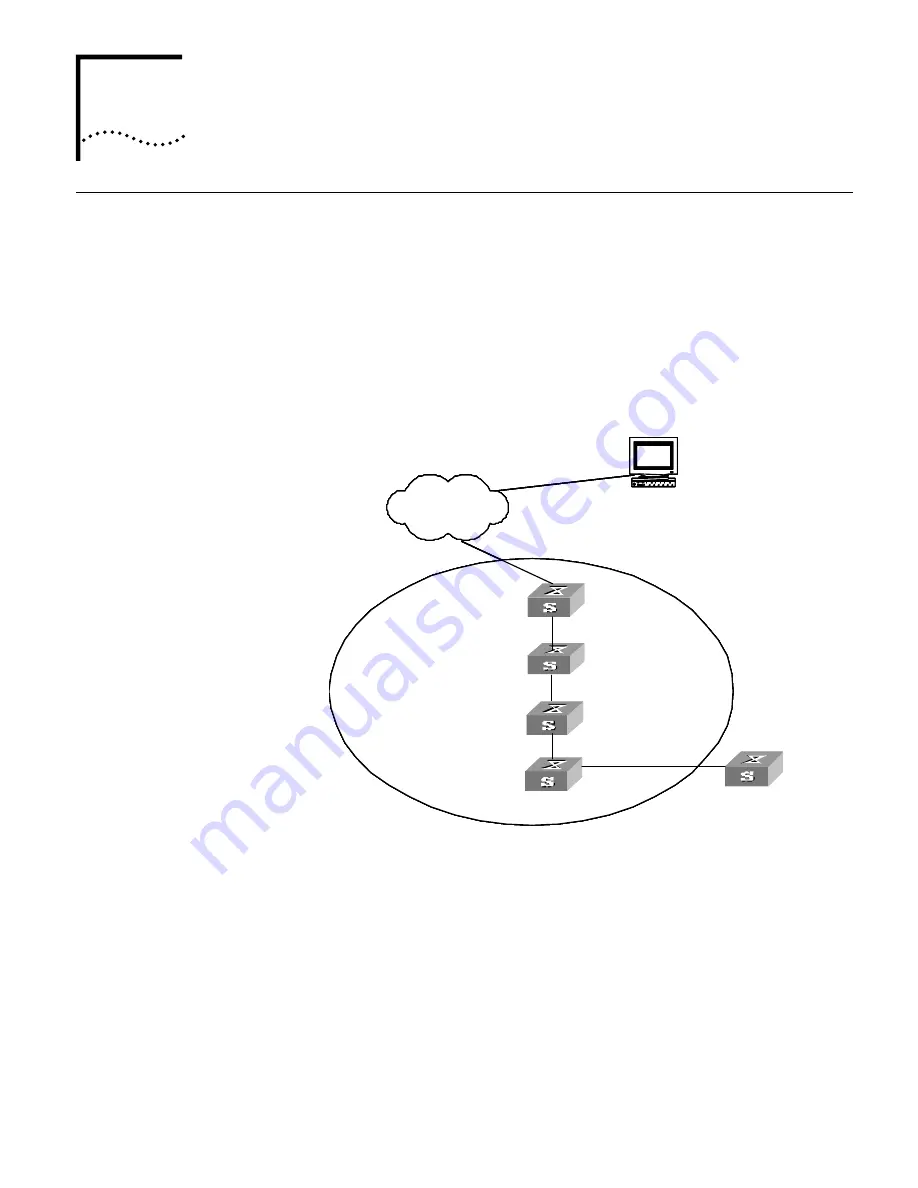
32
C
LUSTER
C
ONFIGURATION
Cluster Overview
Introduction to Cluster
A cluster is implemented through HGMP V2. By employing HGMP V2, a network
administrator can manage multiple switches using the public IP address of a switch
known as a management device. The switches under the management of the
management device are member devices. The management device, along with the
member devices, forms a cluster. Normally, a cluster member device is not assigned a
public IP address. Management and maintenance operations intended for the
member devices in a cluster are redirected by the management device. Figure 83
illustrates a typical cluster implementation.
Figure 83
A cluster implementation
HGMP V2 offers the following advantages:
■
The procedures to configure multiple switches remarkably simplified. When the
management device is assigned a public IP address, you can configure/manage a
specific member device on the management device instead of logging into it in
advance.
■
Functions of topology discovery and display provided, which assist network
monitoring and debugging
■
Software upgrading and parameter configuring can be performed simultaneously
on multiple switches.
■
Free of topology and distance limitations
■
Saving IP address resource
Manage ment Device
Me mber Device
Me mber Device
Candidate Device
69.110.1.1
Netw ork Man agem ent Station
Cluster
69.110.1.100
Netw ork
Me mber Device
Manage ment Device
Me mber Device
Me mber Device
Candidate Device
69.110.1.1
Cluster
69.110.1.100
Netw ork
Me mber Device
Manage ment Device
Me mber Device
Me mber Device
Candidate Device
69.110.1.1
Netw ork Man agem ent Station
Cluster
69.110.1.100
Netw ork
Me mber Device
Manage ment Device
Me mber Device
Me mber Device
Candidate Device
69.110.1.1
Cluster
69.110.1.100
Netw ork
Me mber Device
Summary of Contents for 4200G 12-Port
Page 10: ...8 CONTENTS...
Page 14: ...4 ABOUT THIS GUIDE...
Page 46: ...32 CHAPTER 5 LOGGING IN THROUGH WEB BASED NETWORK MANAGEMENT SYSTEM...
Page 48: ...34 CHAPTER 6 LOGGING IN THROUGH NMS...
Page 60: ...46 CHAPTER 9 VLAN CONFIGURATION...
Page 64: ...50 CHAPTER 10 MANAGEMENT VLAN CONFIGURATION...
Page 80: ...66 CHAPTER 13 GVRP CONFIGURATION...
Page 98: ...84 CHAPTER 15 LINK AGGREGATION CONFIGURATION...
Page 112: ...98 CHAPTER 18 MAC ADDRESS TABLE MANAGEMENT...
Page 126: ...112 CHAPTER 19 LOGGING IN THROUGH TELNET...
Page 162: ...148 CHAPTER 20 MSTP CONFIGURATION...
Page 274: ...260 CHAPTER 29 IGMP SNOOPING CONFIGURATION...
Page 276: ...262 CHAPTER 30 ROUTING PORT JOIN TO MULTICAST GROUP CONFIGURATION...
Page 298: ...284 CHAPTER 33 SNMP CONFIGURATION...
Page 304: ...290 CHAPTER 34 RMON CONFIGURATION...
Page 338: ...324 CHAPTER 36 SSH TERMINAL SERVICES...
Page 356: ...342 CHAPTER 38 FTP AND TFTP CONFIGURATION...
Page 365: ...Information Center Configuration Example 351 S4200G terminal logging...
Page 366: ...352 CHAPTER 39 INFORMATION CENTER...
Page 378: ...364 CHAPTER 40 BOOTROM AND HOST SOFTWARE LOADING...
Page 384: ...370 CHAPTER 41 Basic System Configuration and Debugging...
Page 388: ...374 CHAPTER 43 NETWORK CONNECTIVITY TEST...
Page 406: ...392 CHAPTER 45 CONFIGURATION OF NEWLY ADDED CLUSTER FUNCTIONS...

